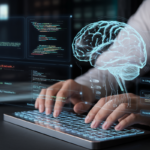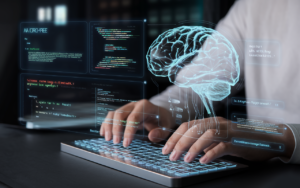Data has become the new fuel for most industries, and future innovations are mostly propagated from the data analytics and data-centric algorithms and technologies. Big Data plays a significant role in all data-centric innovations. All experts agree on the prediction that the dependence on data technologies will continue to increase in the coming years.
Though Big Data analytics is already there as the most promising technology field to push data-driven innovations, in the span of the past few years it underwent several massive changes thanks to a host of emerging technologies such as artificial intelligence (AI), Machine Learning (ML), In-memory computing and several others. Nowadays mobile app development company chicago and across the globe from various industries have become so adoptive, that they always update their services with these new trends.
Let us unveil and explain the top Big Data trends to dominate 2020 and beyond.
The Push of Machine Learning for Data Analytics
For data science tasks, the incorporation of Machine Learning technology has a profound significance. The infusion of Machine Learning is expected to bring the power of automation to data analytics. By 2020 we can expect a considerable portion of the data science tasks to be automated with Machine Learning and AI-driven tools.
Apart from providing the ease and sophistication for the system, Machine Learning based automation coupled up with smart data analytics tools will be able to unveil insights that even expert data scientists can find it hard to extract.
The merger of IoT with Data Analytics
IoT devices are already in rage to give all faces of life the benefits of connected reality. Thanks to the proliferation and increasing use of IoT devices in our day to day life, the data analytics tools are also increasingly getting sophisticated and more productive with new types of data-laden with different customer insights. By 2020 it is expected that several billion IoT devices and gadgets will deliver more user data for data analysis.
So, IoT is expected to play a more significant role when it comes to supplying insight-rich data to data analytics tools. In all large organizations where already IoT devices play a significant role in operation and processes, leaders and strategists are looking forward to the untapped potential of utilizing the assistive data analytics tools to utilize the IoT data in the process.
In-Memory Computing
If you look backward for a few years, you are bound to recognize the decreasing cost of computer memory is giving a positive push for in-memory computing. By 2020 a large number of companies will be able to access more considerable memory power than ever before and thus will only give a more significant push to in-memory computing. In return, in-memory computing will deliver a wide range of data analytics benefits to large companies.
In-memory computing has also been updated in capacity thanks to new memory technologies like the latest persistent-memory, which helped to reduce the cost of memory utilization to a great extent. With the implementation of In-memory computing is becoming quite affordable for industries, many in the time to come will find it useful to boost the efficiency of their data-centric processes.
Data-As- A-Service
Data-As-A-Service or DaaS has emerged as one of the new ways of commercializing data analytics services and garner revenue through data services. It is expected that the vast majority of IT companies will adopt this model of providing data services to other businesses. This cloud-based service protocol that allows users to access data brought digital files over the web will continue to be popular in 2020 and beyond.
Besides allowing the organizations to garner business by sharing data and data analytics, DaaS will also help large organizations to utilize the potential of data through extreme collaboration and sharing. This will help bridge the information gap between companies and processes on a large scale.
A Whole Array of New Data Analysis Tools
As data analytics is increasingly becoming the crucial central figure in business process automation, strategic decision making, and all efforts of boosting efficiency, an increasing number of new data analytics and analysis tools are pouring in. The new analysis and analytics tools will continue to emerge and proliferate in 2020 and beyond.
The data scientists and all experts and developers dealing with data tools need to be constantly updated with these new tools and technologies like the latest databases such as MongoDB, NoSQL, HBase, etc. As for new frameworks and languages, data scientists of the future should learn Python, SAS, Apache Hadoop, etc.
Increasing Concern Over Data Security and Privacy
If you look at the growth of data analytics tools and the exposure to all sorts of new data technologies, you are bound to realize that the organizations today in spite of having access to the huge potential of data are also more vulnerable to data manipulation leading to data security and privacy concerns. This is why it is expected that more companies and organizations in 2020 will prioritize data backups and data validation in their processes.
To mitigate the concerns about data security and privacy many organizations will use the latest technologies like Blockchain. Blockchain-based decentralized ledger systems will become more popular in safeguarding organization data and transactions in 2020 and beyond. The tamper-proof and unchangeable database technologies will continue to prosper and play a bigger role in the coming years.
Conclusion
Data will be at the center stage for business planning, strategy, and implementation of new protocols and technologies. As the potential of data is being realized by the vast majority of organizations and companies across the niches, the popularity of advanced data-centric tools, security technologies, and the latest database technologies will play a major role in the coming years.



 The $100K Skill Nobody Taught You: Prompt Engineering Explained
The $100K Skill Nobody Taught You: Prompt Engineering Explained




